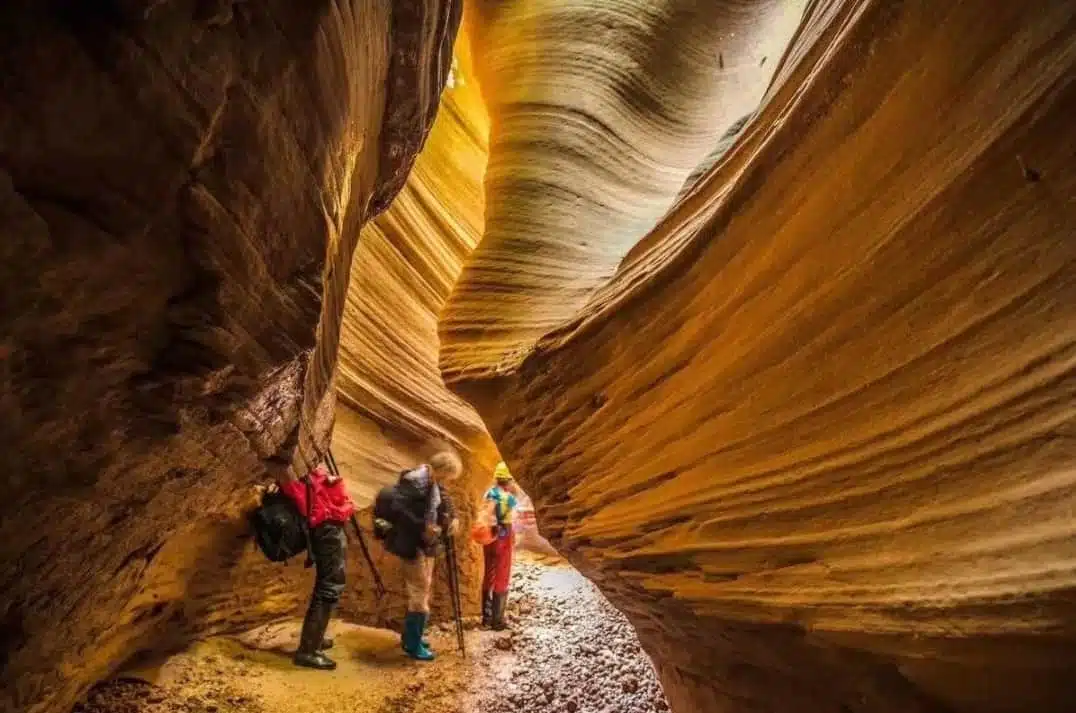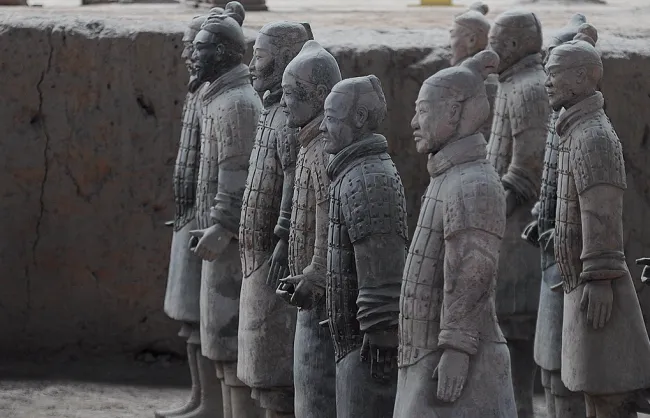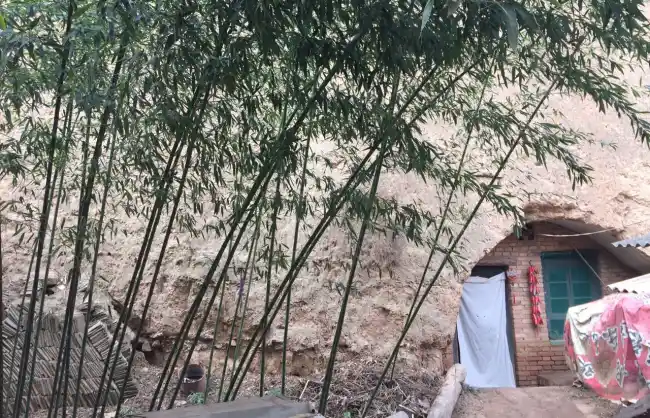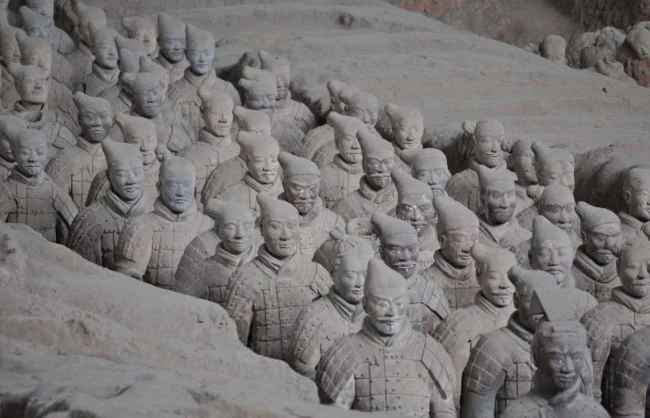Top Natural Wonders and Cultural Sites in Shaanbei
Located in the the northern edge of the Loess Plateau, Shaanbei is a less-known travel destination that deserves a visit for those who keen on astonishing geographic landforms, profound history, distinct folk art and cultue, and spectacular nature scenes. Far more than the famous Hukou Waterfalls, and distinct folk art forms such as paper cutting, waist-drum, folk singing, this secret land actually has more hidden gems to offer.
Please scroll down to learn the most brilliant highlights of this amazing myterious land.
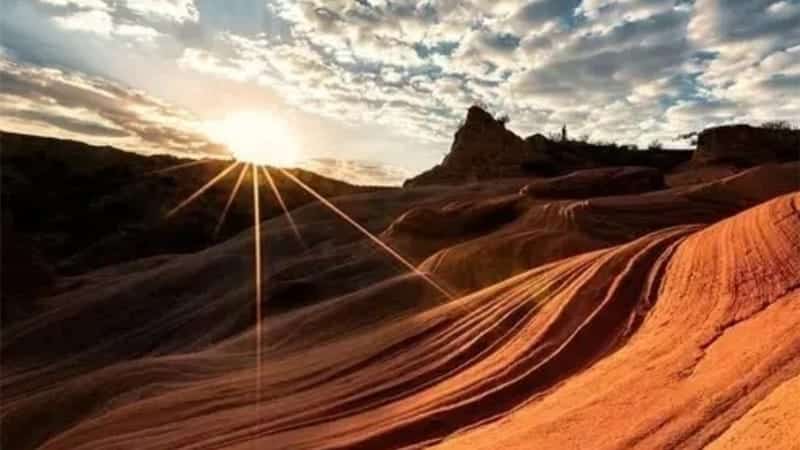
Astonishing Natural Wonders on the Loess Plateau
Hukou Waterfalls
At the intersection of Shanxi Province and Shaanxi Province is Hukou (means the mouth of teapot) Waterfall, the only yellow waterfall in the world and the second largest waterfall in China. Over history, many famous poets and painters were wowed by its grand view, and left numerous works giving high praise to the waterfall.
When the mighty Yellow River surges its way into the Qin Jin Grand Canyon, the riverbed abruptly narrows down from 4-5 hundred meters to about 50 meters, turning the smooth water flow into rapids. The scene is overwhelming with water stirring up masses of smoke and clouds, as if the water is pouring down from a huge teapot, hence its name.
The amount of water changes depending on the season, presenting special scenes in different seasons.
Every day at 17 o’clock, the performance of “The Yellow River Cantata” starts on the Shaanxi side on time, which together with the roaring sound of the waterfall will add thrill to the overall experience.
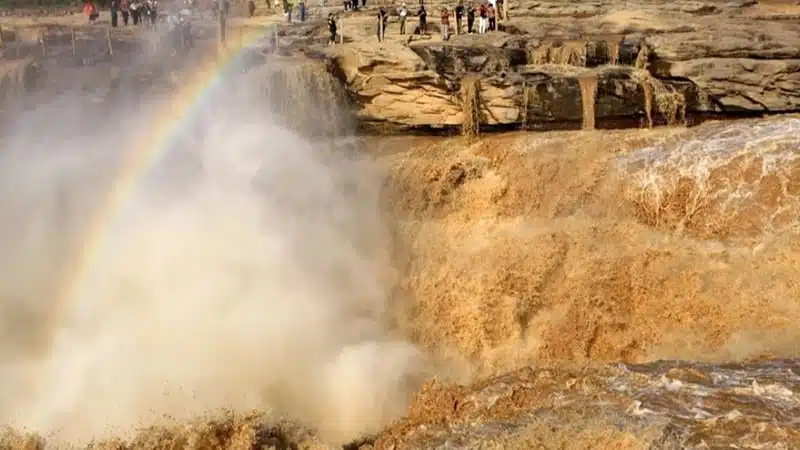
Qiankun Bend of Yellow River
The Yellow River flows 68 km through the Qin-jin Gorge in Yanchuan County, leaving 5 grand S-shaped river bends in the county, which is called Qiankun Bay. With a 320-degree turn, the Qiankun Bay is called “the first bend of the Yellow River”. Adjoining Qiankun Bay, the Qingshui Bay is also eye-catching with a big turn of 305-degree.
Both of the two bays are so grand that even a 16 mm ultra-wide-angle lens can’t shoot the whole view of them. The best panoramic view of the bays are from drones.
The full name of the scenic area is called Yellow River Shequ National Geological Park, which is characterized by its magnificent river morphological landscape and the varied river geological relics.

Jingbian Wave Valley
About 450 km north of Xi’an downtown area lies China’s own version of “the Wave of Arizona”- Jingbian Wave Valley.
Located in the Longzhou Rural District, Jingbian County, Jingbian Wave Valley is nature’s masterpiece on sandstone canvas. It is characterized by its red sandstone landform that looks like peculiar waves stretching around the surrounding ridges.
These stunning sandstone formations show different colors at different times and various shapes from different angles, looking grand and magnificent.
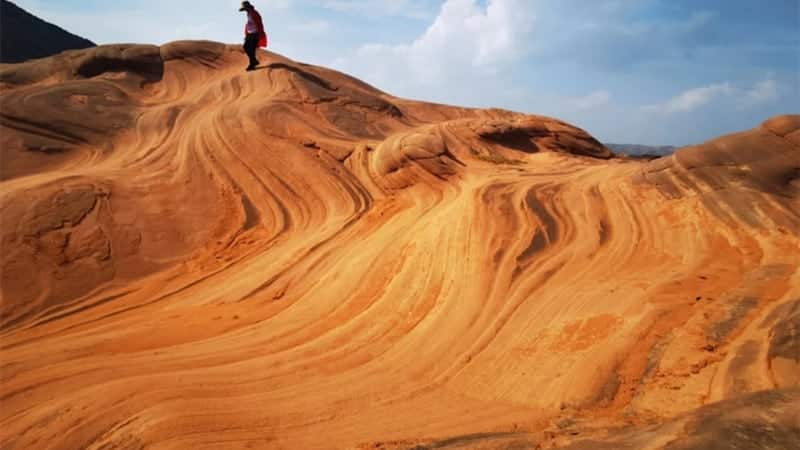
Ganquan Yucha Canyon – Antelope Canyon of China
This is the place in China with similar landscapes to the Antelope Canyon in the United States, where the rocks even present clearer and richer ripple lines.
There was a heavy earthquake in Shaanxi Province hundreds of millions of years ago, which caused a great rift between a loess-covered mountain. Then after hundreds of years, the rainwash finally flush the canyon into the shape we know it today.
Walk into the canyon, as you look up, you may see the surrounding rocks like a giant vortex swirling overhead. Lights and shadows knit a mesh cleverly, sandstone presents red, orange, and ocher colors, everything in the canyon was dreamlike.
Currently, the canyon is still less known and sees not too many tourists. Visitors here were basically photographers.

Maowusu Desert
If time permits, the Maowusu Desert is worth a visit.
It is one of the four major deserts in China where the Great Wall runs through the southern edge of the desert from east to west.
In history, this area was once a green and energetic meadow that was turned into a desert due to climate change and human activities. Now, thanks to decades of years of work, it is rescued and turned green and alive again.
You will be rewarded with an amazing sunset view if visit here at dusk.

Mahuangliang Loess Geo-Park
The Mahuangliang Loess Geo-Park is located at the junction of loess plateau and Maowusu Desert, boasting spectacular geological heritage and landscape.
With an area of 37 square kilometers, the park highlights several peculiar landscapes, among which the “Steep Cliffs”, “Gorge Lake” and “Red Hills” are really breathtaking.

Mysterious Historical Sites and Relics
Zhongshan Grottoes
Believed to be built during the Eastern Jin Dynasty (A.D. 317-420), the Zhongshan Grottoes are a complex of 18 caves, among which 5 caves have been unearthed so far.
Presenting an octagonal shape, the main grotto is a highlight here which was decorated by over ten thousand of vivid Buddha sculptures being carved in the walls and pillars, and 16 Buddha figures of 2-3 meters high surrounding a Buddha altar.
Thanks to its important historical and artistic value, the Grottoes have been listed as one of the key cultural sites of China, and a partial copy of it is shown in the Shaanxi Historical Museum in Xi’an.
Zhongshan Grottoes have an important historical and artistic value and have been listed among the key cultural sites of China since 1988. A partial copy is shown in the Shaanxi Historical Museum in Xi’an.

Hongshi Gorge Cliff Rock Carvings
It is said that the ancient civilizations that occurred in Yulin City in northern Shaanxi Province have all been imprinted in a red canyon, which is Hongshi Gorge.
It is cut out by the Yuxi River, with cliffs and overhanging rocks on both sides. Over 44 caves, shrines, and temples dating back to Ming Dynasty (1368-1644) and Qing Dynasty (1644-1911) were chiseled in the gorge.
The gorge particularly stands out for the over 160 rock carvings and inscriptions on the cliffs left by celebrities throughout history, making it a calligraphy treasury in China.
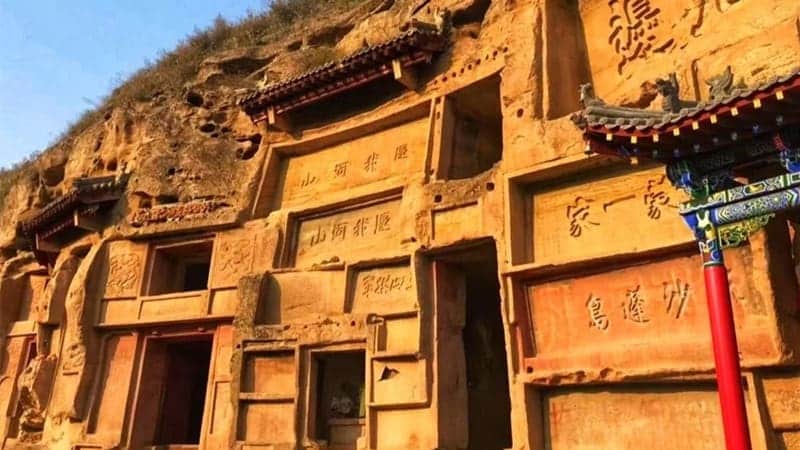
Zhenbeitai Great Wall
As the largest watchtower along the Great Wall, Zhenbeitai is known as the “First Tower of the Great Wall” due to its key location and military significance.
Originally constructed in 1607 during the Ming Dynasty (1368-1644), Zhenbeitai is actually built as an observation post to maintain the order of the nearby Hongshan Market which is the witness of business transactions between Han and Mongolian people.
To the east of the Zhenbeitai Tower lies the Kuangong City. It was a prosperous official market in the Ming Dynasty where officials entertained Mongolian messengers, held tribute offering ceremony, and discussed foreign affairs.

Tongwan City Ruins
Being built in 413 during the East Jin Dynasty, Tongwan City Ruins are the most completely preserved Xiongnu ruins that have ever been found.
L0cated in the Maowusu Desert where nomadic culture and agricultural culture intersect, the over 1600 years old Tongwancheng still bears traces of its past glory.
This city is composed of an inner city and an outer city. The inner city is divided into the east city and the west city. At present, all the ruins are the remains of rammed earth buildings.

Xianglu Temple
Sitting high on the bank of the Yellow River, the Xianglu Temple (Censer Temple) is a good viewing platform to admire the magnificent view of the Yellow River unobstructedly.
With three sides face the Yellow River, the temple is only accessible from one narrow alley connecting the Jiaxian County. It must be on the list when comes to the most special temples in China.
The temple is built on a huge stone pillar that looks like a censer, hence its name Xianglu Temple (Censer Temple). The river view from the temple is amazing, especially at dust when the stunning sunset shines lights on the Yellow River and the lonely temple.
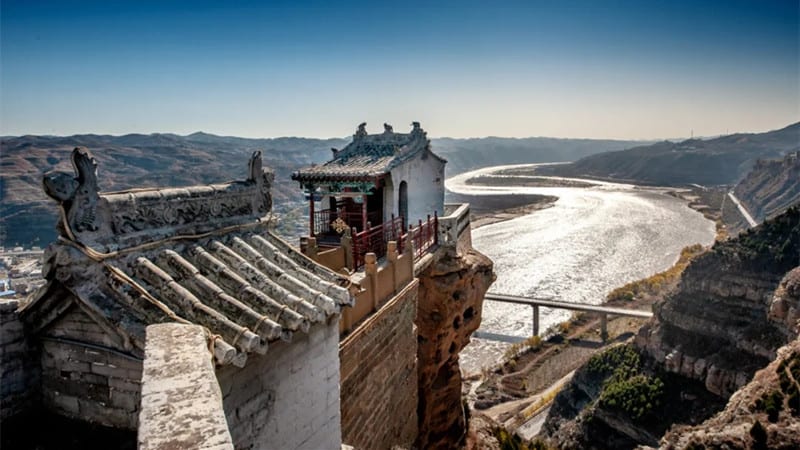
To get more insider’s advice and information about Shaanbei, please feel free to contact our travel consultant.

